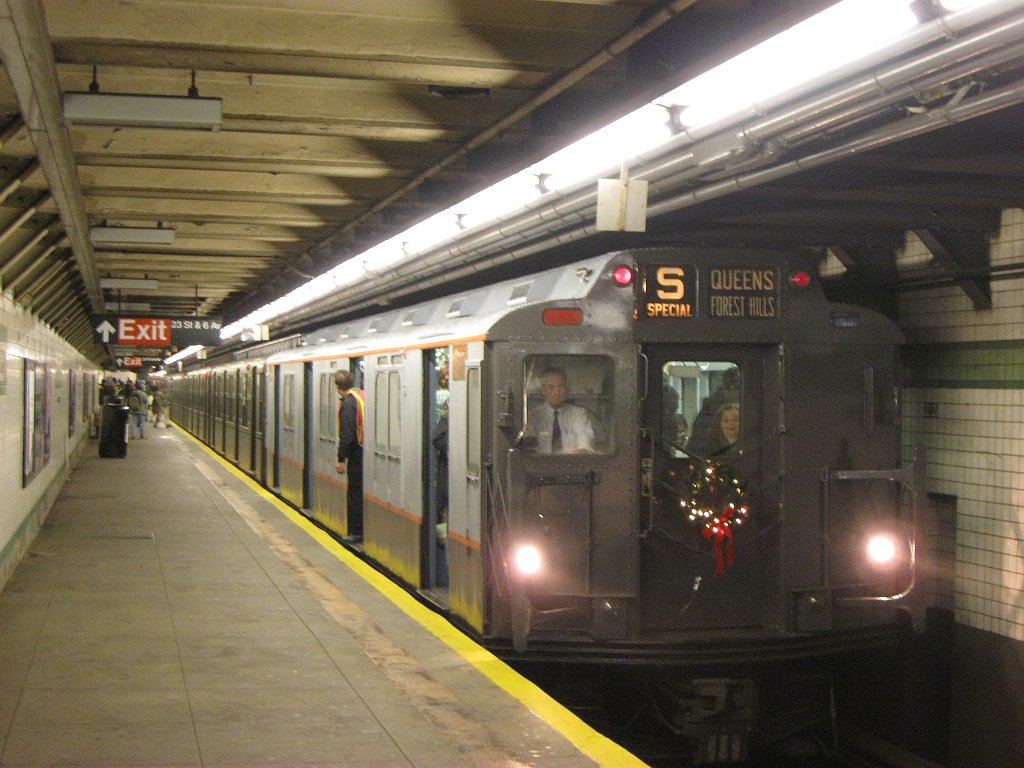The Anniversary No One Celebrates in New York: Generations of Transit Disaster—-the New York City Subways, Part 1.
The New York City Subways are a mess. That’s led to persistent rider and taxpayer problems over decades. Both line extensions and adequate maintenance have been repeatedly delayed because the system can’t generate nearly enough money to even break even, no less make the improvements necessary to keep this massive system in good repair.
“It will take until 2067 to get the entire system into good condition,” wrote the Citizens Budget Commission in a recent report.
This has been the story of the New York City subways since complete government takeover in 1940. The last seventy five years plus of subway history demonstrate the failure of the current system of government ownership and operation. The system is hobbled by a 1940s government takeover/reform as well as a 1950s decision by the political ruling class to hand over operating responsibility to an authority, which was later replaced by a disastrous, spendthrift state authority, the MTA.
The MTA also operates all the buses and commuter railroads in the region. The MTA, by the way, has its headquarters in the most expensive part of town on Madison Avenue in Midtown Manhattan.
These “reforms” were supposed to solve the system’s problems and ensure it operates in the public interest. But just about everyone agrees the system has deteriorated at an alarming pace over the years, especially riders, who, on a daily basis, use this fragile system from the outer boroughs to travel into the center of the city, Manhattan.
Prior to 1940, the system had included some private management companies. The latter built the first lines in private/public agreements. The underground trains began operating in 1904. The subways were once partly run by private management companies operating under a public franchise. And some were, for a time, very successful before they were regulated to death. The New York City subways, in the private management era (1904-1940), had an approximately 15-year golden era until around the end of World War I.
Service was good. Private companies, though highly regulated, often made money, sometimes a lot of money. That’s even though government subway advocates then, and even some supposedly free market advocates at the Manhattan Institute today, insist it is impossible to turn a profit on mass transit. They dismiss the idea of private management companies in any part of the subways, any part of it.
Yet ironically many of these private sector opponents also criticize the current system. They—as well as a vast majority of ruling liberal politicians here in New York—see any form of privatization as too radical a solution.
Private Management Is Forbidden
Under private management companies, defenders of the current system say, the riders would suffer. Fares would skyrocket. However, the price of a ride is actually a lot more than the basic $2.75 today. That’s because city and region residents pay various tolls and taxes to cover the system’s persistent red ink. The latter, as with almost all government operations, grows and grows as money is lost, wasted or spent on other things. For example, taxpayers have repeatedly paid through the nose for bond issues for new lines that are yet to be built.
What happens?
Projects, often so publicly begun with groundbreaking ceremonies and cameras rolling, were never completed. That’s because, as with almost everything the government does, the project goes far over budget. And, in the case of the subways, taxpayers and riders have often been misled: Sometimes money designated for a new line was later used to close persistent year-to-year deficits.
Despite all the problems of the public system of 75 years, today many public interest groups, ruling out the return of private management companies, complain about poor service and rising fares.
Their answer?
More of the same, say the powers that be in New York. New forms of public control. The answer, say New York leaders, can never be to take control of the trains away from the public sector, no matter how badly things become.
How Did the Subways Get Mugged?
This series of articles will attempt to answer that question as well as some others. But the woes of the subway system begin with a truth, proven again and again, by economic history: Governments almost always, when they go outside of their mandate to provide traditional public services and run businesses, fail. Then generations of taxpayers today and tomorrow get stuck with the bills. This is as true for Amtrak, the national passenger railroad of the United States, or FannieMae and FreddieMac, two government housing agencies that were in the middle of the housing market meltdown of 2008.
Governments blunder when they try to run businesses; when they engage in an oxymoron called state enterprise. And if ever there were an example of a state enterprise with a protracted history of failure, it is New York’s deteriorating subways.
I will continue with the disastrous 75-years of government ownership of the New York City subways in our next installment.
![]()
